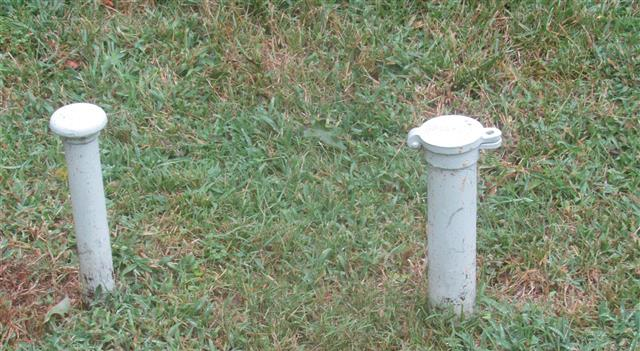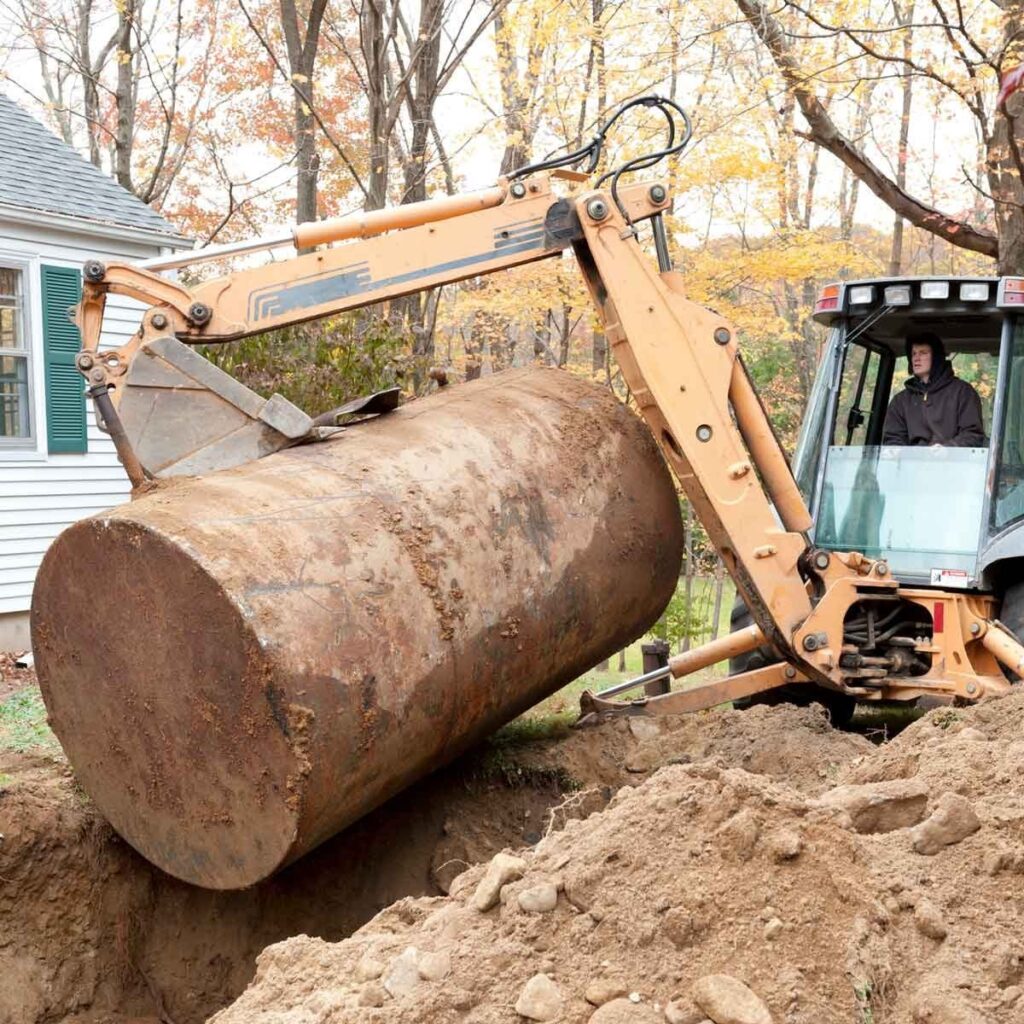Do you use a buried oil tank for your home heating tank? If you do, we recommend that you remove your underground oil tank and replace it with an above ground tank. There are quite a few reasons as to why you should remove it. When they eventually start to leak, then you will have a serious environmental hazard on your hands that could be problematic in the future. In this article, we will discuss the reasons you should remove it and when it’s time to do so.
Identifying an Underground Oil Tank
If you are new to using heating oil, it’s important to know the fundamentals. If your home uses heating oil, then you’ll like have a tank located somewhere on your property. This could be anyway from in your basement or garage. Sometimes, your tank will be located outdoors. To keep your home warm, you’ll need to fill up your tank every so often. You’ll likely have to order heating oil on a regular basis to sustain your supply of oil.
Most oil tanks are commonly above ground. However, underground tanks are often use pretty rarely. Back in the 60’s, 70’s and 80’s they where very popular. They grew popularity because the idea of having a massive oil tank out of sight was very appealing. However, as the years went on, some of them started to leak. They became environmental hazards and by the 90s, had begun removing these tanks.
It’s very rare to see any home built since the 1980s to still have underground tanks. If you’re curious, check to see if you have two pipes sticking out from underground. If you see those two pipes, you likely have a buried tank.

Why You Should Remove your Underground Oil Tank
You should replace your underground oil tank as soon as possible. This is because, even if it hasn’t start leaking, it will eventually. An underground oil tank that begins leaking is an environmental hazard. If the tank leaks into the soil, it will contaminate the soil. It can cost up to several thousands of dollars to remedy the leak.
- Your Tank is 30 Years Old or Older: If your home was built in the 1990’s or older, your oil tank is likely 30+ years old. After about 30 years or so, the interior walls of the oil tank will begin to corrode. Once the corrosion process begins, sections of the tank will begin to break and once the walls become too thin and weak, they will begin to leak. You can have the soil around the tank inspected, it is not easy. If your tank is this old, you should consider replacing it, removing it or relinquish the tank. You can begin the replacement process by deciding what tank you would like to get. We discuss Roth vs Granby style tanks in this article here.
- The Tank has Begun to Leak: It’s close to impossible to properly inspect an underground oil tank. Which makes it hard to spot a leak. However, you can keep a close eye on the amount of oil that you are using to determine if you have a leak or not. By keeping track of what your daily usage and gallons are, you can determine how much you’re burning and how much is leaking. You can use a Tank Chart to determine how many gallons are in your tank based on how many gallons it takes and the recorded level. Refer to this article to determine how many gallons you should have without a leak. If water starts to infiltrate your boiler, then it’s very possible that your tank is taking in water which means that oil is escaping the tank as well which can lead to an environmental disaster.
- You Have Plans to Sell Your Home: Sometimes an underground tanks can be a real deal breaker for potential customers. Few banks will even mortgage a home if it has a buried oil tank due to the potential for being a liability. Removing the tank and remedying the soil are often expensive and take up a lot of time. However, removing the tank will be overall a good idea to prevent potential property damage in the future that could end up being a lot more stressful than it’s worth.

The Verdict
You should remove your underground tank as soon as possible if it thirty years or older. After being buried underneath your yard for several decades, it’s hard to know what your tank’s condition is like. To get it removed, hire a well known tank removal company to remove the tank and dispose of it. Additionally, they will also test the soil around the tank itself to make sure no oil contaminants have damaged the soil around it.
Getting a new above ground oil tank installed is the next task that should be done almost immediately after removing your underground tank. Once the tank itself has been removed, you can stop at your local Home Depot or Lowes and scout out some new tanks.
Alternatively, you can go online to the manufacturers themselves to purchase a new tank. Getting an above ground tank will not only last you longer, but you’ll be able to more accurately keep track of your oil consumption! Above ground tanks are also easier to maintain! You will be able to monitor the tank itself and make sure it’s not leaking.
Happy Heating,
Hunter



